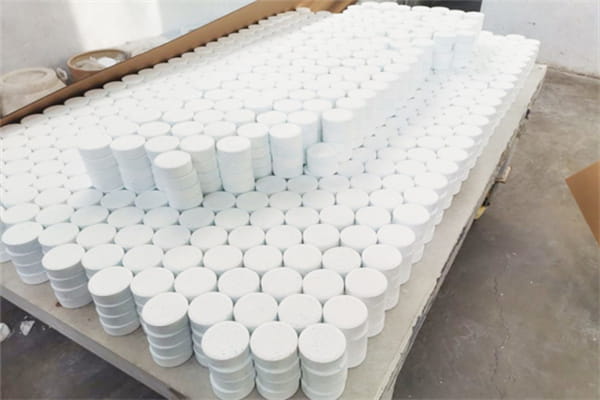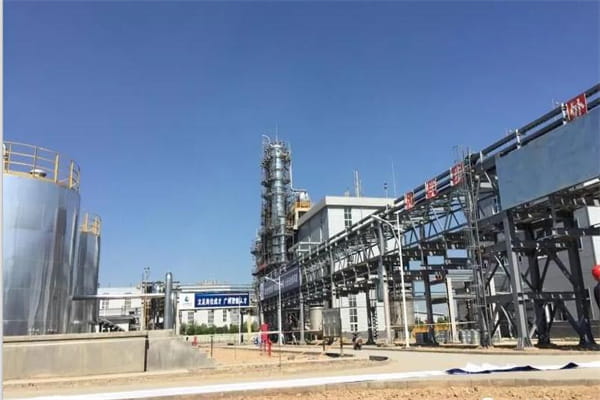Chlorine tablets are a staple in water purification, especially in pools, drinking water, and even wastewater treatment. These small, potent discs play a critical role in ensuring the water we use and consume is safe from harmful microorganisms. But what goes into making these seemingly simple, yet highly effective chlorine tablets? This article delves into the intricate production process of chlorine tablets, from the raw materials to the final packaging.

The Importance of Chlorine Tablets
Before diving into the production process, it’s crucial to understand why chlorine tablets are so essential. Chlorine is a powerful disinfectant that effectively kills bacteria, viruses, and other pathogens. In tablet form, it offers a convenient and controlled method for delivering the right amount of chlorine into water systems. These tablets are widely used in various settings, including swimming pools, drinking water reservoirs, and emergency water purification kits. The demand for chlorine tablets has only increased as global water safety concerns grow, making their production a significant industrial process.
Raw Materials and Their Preparation
The first step in the production of chlorine tablets involves sourcing and preparing the raw materials. The primary ingredient is calcium hypochlorite, a chemical compound known for its strong bleaching properties and ability to release chlorine when dissolved in water. This compound is often produced by reacting calcium oxide (lime) with chlorine gas, resulting in a white or grayish powder that serves as the base for chlorine tablets.
In addition to calcium hypochlorite, other ingredients are used to stabilize the tablets and control the rate at which chlorine is released. These include binders, which hold the tablet together, and agents that help the tablet dissolve at a consistent rate. The quality and consistency of these raw materials are crucial, as they directly affect the effectiveness and safety of the final product.
Mixing and Formulation
Once the raw materials are prepared, they are carefully measured and mixed according to specific formulations. The formulation process is highly controlled, as even slight variations in the proportions can lead to differences in the tablet’s effectiveness or stability. During mixing, the calcium hypochlorite is combined with the binders and other additives to create a homogeneous blend. This blend is then subjected to a series of quality checks to ensure that it meets the required standards before proceeding to the next stage.
Tablet Pressing
After the formulation is finalized, the next step is pressing the mixture into tablets. This is done using high-pressure tablet presses that compact the powder into solid discs. The pressure applied during this process is carefully calibrated to ensure that the tablets are dense enough to maintain their shape during handling and transportation, but not so hard that they won’t dissolve properly when added to water.
The tablet pressing process is crucial because it determines the final product’s size, shape, and dissolution rate. The machines used in this process are highly sophisticated, allowing for precise control over these variables. The tablets produced at this stage are typically tested for their physical properties, such as hardness, friability (tendency to crumble), and dissolution rate, to ensure they meet the necessary specifications.
Drying and Coating
Once the tablets are pressed, they may undergo a drying process to remove any excess moisture. This step is essential to prevent the tablets from clumping or degrading over time. In some cases, the tablets are also coated with a protective layer to enhance their stability and prolong their shelf life. This coating can also help control the release of chlorine when the tablet is used, making it an important part of the overall production process.
Quality Control and Testing
Quality control is a critical aspect of chlorine tablet production. Throughout the entire process, from raw material sourcing to the final product, rigorous testing is conducted to ensure that the tablets meet strict safety and performance standards. This includes chemical analysis to verify the chlorine content, physical testing to assess the tablet’s hardness and dissolution rate, and microbiological testing to confirm the tablets’ effectiveness in killing pathogens.
The quality control process also involves regular inspections of the production equipment and facilities. Any deviations from the established standards are promptly addressed to ensure that the final product is safe and effective for consumer use.
Packaging and Distribution
After passing all quality control checks, the chlorine tablets are ready for packaging. Packaging is another critical stage, as it not only protects the tablets from moisture and contamination but also provides important information to the end-user. The tablets are typically packaged in airtight containers or foil pouches to maintain their potency. Labels on the packaging include usage instructions, safety warnings, and expiration dates.
Once packaged, the chlorine tablets are distributed to various markets, including swimming pool suppliers, emergency preparedness retailers, and water treatment facilities. The logistics of distribution are carefully managed to ensure that the tablets arrive in optimal condition, ready to perform their vital role in water purification.
The Role of Chlorine Tablets Factory in Production

The entire production process of chlorine tablets takes place in specialized facilities known as chlorine tablets factories. These factories are equipped with state-of-the-art technology to ensure the production of high-quality tablets that meet stringent regulatory standards. The role of a chlorine tablets factory is not only to manufacture these tablets but also to innovate and improve production methods, ensuring that the tablets remain effective and safe for users worldwide.
Conclusion
The production of chlorine tablets is a complex and highly regulated process that involves careful sourcing of raw materials, precise formulation, and rigorous quality control. These tablets play an indispensable role in water purification, making the water we drink and swim in safe from harmful pathogens. As global demand for clean and safe water continues to rise, the importance of efficient and reliable chlorine tablet production cannot be overstated. The next time you drop a chlorine tablet into your pool or water storage, you can appreciate the intricate process that ensures its effectiveness and safety.




